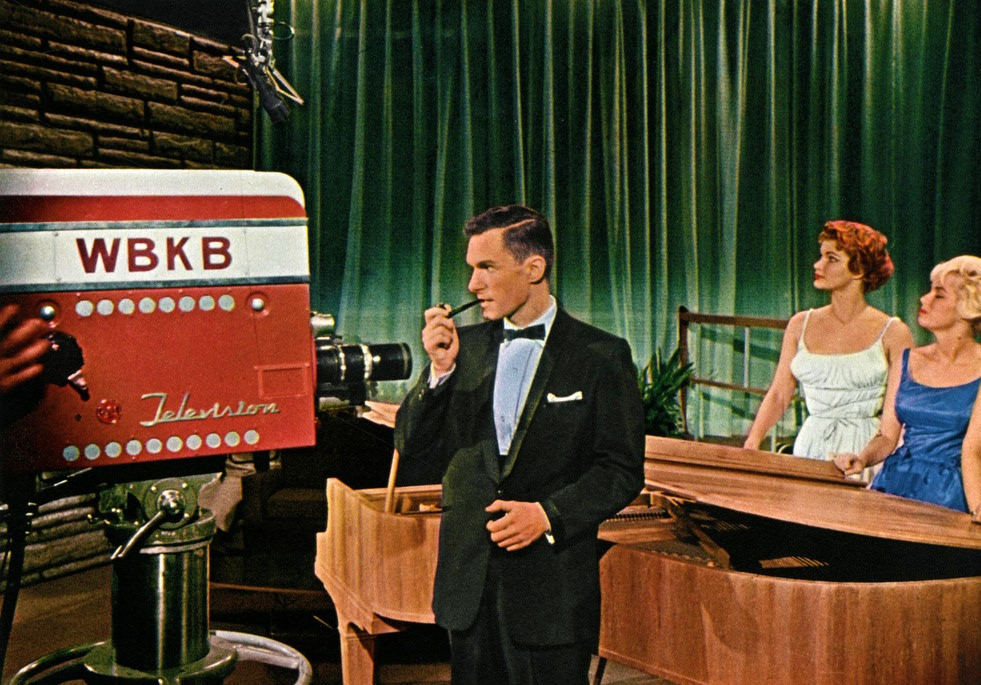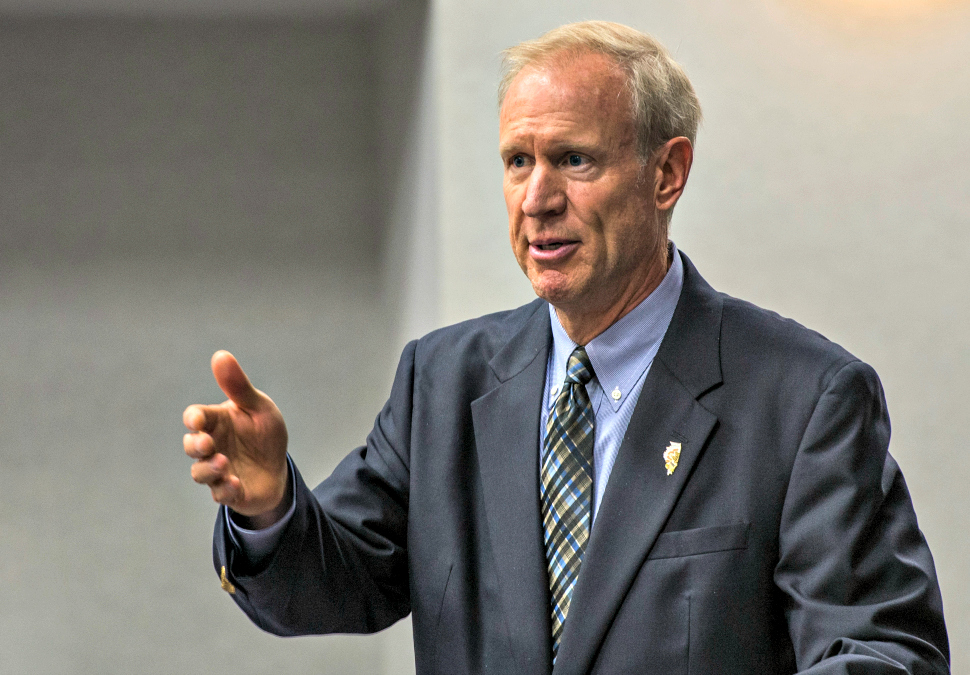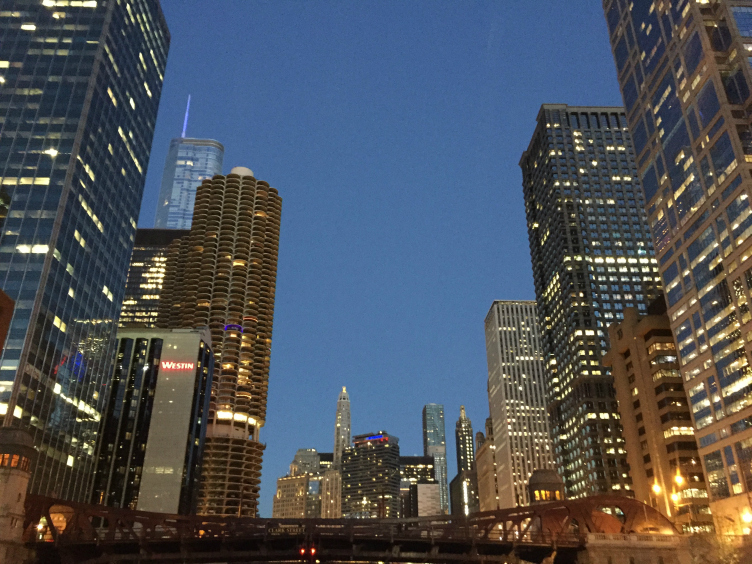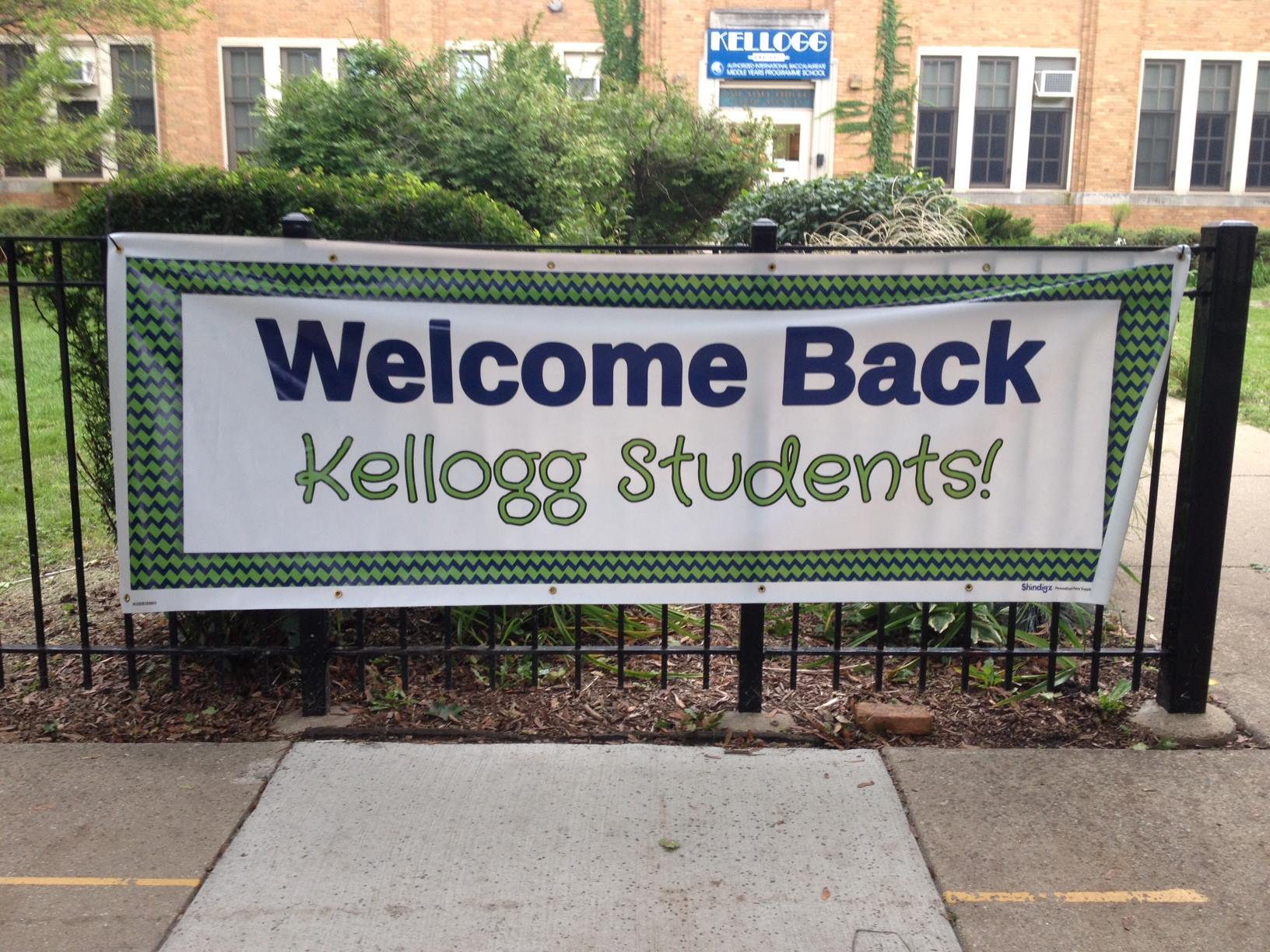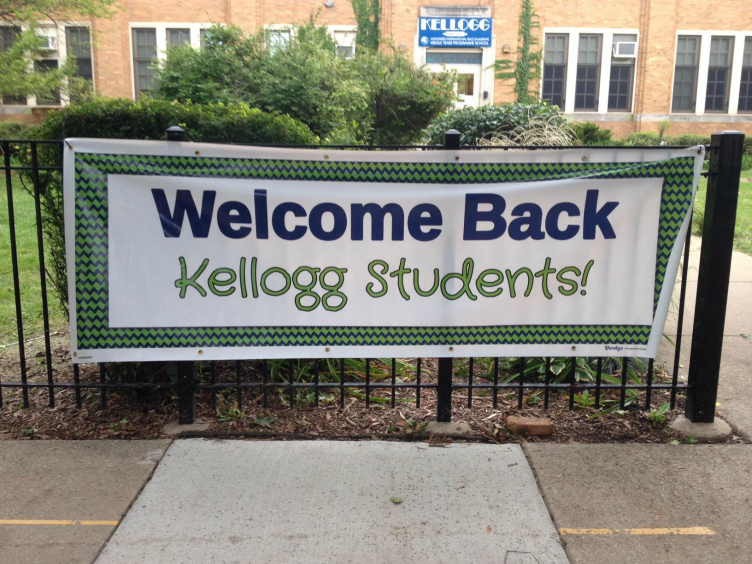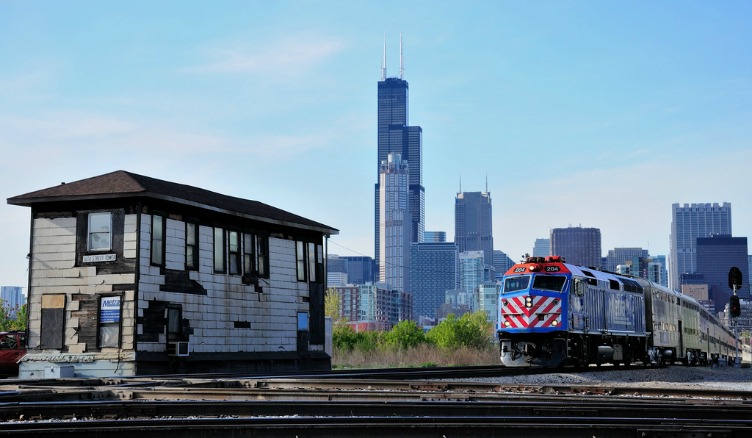
A little over a year ago, I was reading The Third Coast. The book is full of stories of how Chicago was a hub of innovation. Not innovation in the way we currently think of it – as “the Uber of X” – but innovation in poetry, architecture, television, print, music, business, etc.
The television and media part stuck with me. I hadn’t ever really understood what Dave Garroway did and how Studs Terkel’s worldview was given life through the medium of TV and how important it all was before this book.
It seemed like TV – or something akin to TV with a heavy social media component – could still do that. To take the idea of the Chicago school of experimentation and apply it to conversations we’re having now. What is Chicago’s place in the national conversation? Or why isn’t it more prominent in that discussion? And what can we do to change that through media?
So I asked the question “What’s missing from Chicago media?” As you can see from that link, I had a lot of help answering that question.
All those answers informed the below: a way to tell national stories through a Chicago lens.
I have no agenda in posting this now other than it was an idea I spent some time on and the results of it have never been published. And I wanted to get it out there before the ideas around it seem too old. Since I started the discussion it public, it feels right to continue it that way.
There’s so much I love about Chicago media. So many reporters and producers are doing vital work. We need more of it. We need to know how to pay for it, too. But I wanted to know what we could do that’s different.
This is that.
—
What is this show?
This show will look at what’s going on in the U.S. through personal stories based in Chicago.
But it’s a daily news and information show combined with advocacy. It delves deep into a single topic each day across TV and social and shows both how it affects the audience and what they (or others) can do to contribute to a solution.
In doing so, it answers three questions for the audience:
* What do we know?
* What do we think?
* What are we doing?
We do this by making sure the audience sees itself reflected in what’s happening on-screen and giving the viewers a stake in it, which increases relvancy, word of mouth and audience size.
This should not be driven by media talking heads or “experts.” Sure, there’s some of that in the “what do we know” portions but we should hear more from the people living the issues we’re exploring.
Most importantly, this will solve for the biggest problem viewers under 40 have with these kinds of shows: understanding how it affects them in their daily lives and what to do with this information in order to make a difference.
Why does this show need to exist?
There’s a need for a daily news/information show that goes deep into a topic and isn’t ruled by a “news peg” or the 24 hour cycle. Look at the response to Last Week Tonight with John Oliver. That show is revelatory because it exists outside the regular news cycle and motivates the audience to act.
There’s also a need to treat culture, food and arts with the same rigor and conversation as politics.
And we are perfectly positioned do all this here.
Chicago is a microcosm of the country, good and bad – in a way that NYC and LA can never be – while still remaining a national influence thanks to its geography and demographics.
Consider:
* Our struggles between public vs. charter schools
* The crime problems, whether in the “inner-city” or the suburbs and their drug problems
* A world-class mix of fine dining and street food has helped turn us all into foodies
* Neighborhoods that all have their own personalities, adding up to a larger whole
* Arts and culture that’s the home of Lollapalooza, Pitchfork, the Goodman Theatre or the next Wilco
The subtitle of the book The Third Coast says “Chicago built the American dream.” We were and still are a great testing ground for ideas. In many ways, Chicago’s problems and successes still explain what’s going on in the rest of the country.
The knock on younger news audiences is that they are uninterested in news. This isn’t true. News is important to them.
What they dislike is how most news is structured: it features the same old players in the he said/she format and doesn’t demonstrate how it’s relevant to them. They get their news through social so their news needs to be inherently social.
“Simply put, social media is no longer simply social,” the Media Insight Project report says. “It long ago stopped being just a way to stay in touch with friends. It has become a way of being connected to the world generally — to send messages, follow channels of interest, get news, share news, talk about it, be entertained, stay in touch, and to check in and see what’s new in the world.”
We also need a show that explores a broad range of viewpoints. The second part of this post on Medium lists recommendations for news from a still-relevant 2002 study on youth (consider that this cohort now makes up part of the older millennial segment):
“Let youth speak for themselves.” “Highlight root causes and trends.” “Examine solutions other than increased punishment and incarceration.” “Link social problems to public policy.”
Right now, some news organizations – mostly national – do parts of this. But no one does all of it and especially not in video or live TV.
WBEZ’s public radio programming often does deep dives with community voices. Chicago magazine, DNA Info Chicago and Belt magazine do mixes of long features and personal stories that explore topics outside of news cycles. Some TV stations will do special reports like this – think Fox 32’s “Chicago at the Tipping Point” series. This format could mix all of these approaches in a much more exciting way.
What is it like? What makes it new/different?
We’d see two co-hosts, preferably late 20s/early 30s. To be demographically specific, the relevance of this kind of show would be increased with at least one person of color and a woman (two women of color would be ideal). They’re our guides, but they’re us: they’re asking questions, they’re asking for more detail, they’re exploring. They are not approaching this as the all-knowing journalist who keeps an arm’s length from the topic. But they have expertise and experience. More importantly, they’re entertaining. They approach these topics with humor, when appropriate, but can handle serious topics, too.
Also, there are three things about this that make it new/different:
Socially-sourced: The 13-week editorial calendar will be planned out in advance and posted online for viewers to see. Viewers will be encouraged to email/tweet/message us who they’d like to see on the show. This will help us ensure we’re not getting the same voices we always see in these types of shows and showcase more of the people who are affected by or living these issues.
Socially-driven: In addition to the video conversations, we’ll see curated tweets, FB posts and photos pop up live throughout the show. Viewers will be told how they can contribute to the conversation through an onscreen hashtag. (Yes, this kind of thing has been done before but it’s rarely relevant to what’s happening onscreen, it’s usually just noise).
Socially-relevant: Even though we’ll have planned our topics in advance, the social conversation will keep it fresh and of that day.
Here’s a rough outline of how this might work as an hourlong version (weekly) or a half-hour long version (daily). Keep in mind we discuss a single topic throughout the hour.
FULL HOUR
Segment 1: WHAT WE KNOW (11 minutes)
A mix of of host-led explainers with infographics and animation that introduces the topic. Provides context for the discussion to follow. Consider this like watching a live version of your favorite blog – maybe Andrew Sullivan’s The Dish in its time or one of the better Vox videos.
Segment 2: SKYPE INTERVIEWS / LIVE VIDEO CHAT – “WHAT WE THINK” (8 minutes)
From the social conversation we’ve seen before, we’ll choose some people to speak with live via Google Hangout, Skype or similar video setup. We’ll either do this one-on-one or in groups. This will help guide the conversation in the roundtable to come.
Segment 3: ROUNDTABLE INTRO – “WHAT WE THINK” (4 minutes)
Short profiles of the people we will meet in the intro. Who they are, what their background is, why we’re speaking to them. Quick thoughts from them on this conversation before we cut to break. We could do this live in-studio or – more ambitiously – as pre-recorded pieces that morning that are edited into the show. These should be people who have a stake in living with these issues, not people from think tanks or the heads of NGOs. Think block club captains, rather than aldermen.
Segment 4: ROUNDTABLE – “WHAT WE THINK” (11 minutes)
Our guests talk with the hosts about the topic. Conversational, open, not argumentative. This will be interspersed with social posts in the lower-thirds. Some of the social conversation will be used as the basis for discussion.
Segment 5: WHAT WE’RE DOING (8 minutes)
Conversation about people and places that are working on solving the problems we’ve discussed. Specific information about how the viewer can participate.
This could include more live Skype video interviews and/or an in-studio interview with a person who works at a social service, agency, a neighborhood organization or an advocacy group.
(More ambitiously, this segment might include a pre-recorded piece from time to time.)
Segment 6: THE PUSH/THE MIC DROP (3 minutes)
This is a straight-to-camera essay that summarizes what we know, what we think and what we want to do. Most of this is written in advance but it also includes drop-in excerpts from what we’ve heard in the show. This is our final call to action.
HALF HOUR
WHAT WE KNOW:
Segment 1: INTRO/EXPLAINER (5 minutes)
Intro / explanation of topic: Discussion of how the topic is normally presented. This is an antidote for the “this person vs. that person” style of discussion. Maybe a couple anecdotes about why we’re discussing it how. (2 mins)
Three-minute mix of animation, stats and facts (3 mins)
BREAK
WHAT WE THINK
Segment 2: ROUNDTABLE (8 minutes)
Interspersed with video-submitted questions from the audience and questions via social
Need to break this up into a series of three issues about the topic, would see that on-screen similar to how ESPN shows the various topics it’s discussing
BREAK
WHAT WE’RE DOING (3 minutes)
Segment 3:
Conversation between the hosts and perhaps a guest about how someone can take part or solve this problem. Could be research, could be volunteering.
Mic Drop: A one-minute straight to camera about what we’ve heard and seen
Possible show topics:
Why are so many people here killed by guns?
How can you make a living as an artist?
Is Chicago’s food scene the most innovative in the country?
Why is Chicago so corrupt?
What would it take for Chicago to become the next Silicon Valley?
Some final show notes:
Each piece of the show will exist in parts that will be broken down into social-friendly components.
It will be extremely important that this show is not shot in a typical studio environment. If this comes across like a CNN panel, we’re sunk. Think more about the average co-working space or a “teaming area” you’d see at an agency. The roundtable segments will need to feel / look as if the viewer is eavesdropping on a conversation. They shouldn’t start with a moderator controlling the conversation nor should we be aware of the camera through showy zooms, etc.
We’ll also need to see a variety of viewpoints. Again, this can’t be set up as “one side thinks this, another side thinks that.”
The 13 week editorial calendar will likely include a handful of topics that we go back to again and again in each season/cycle like gun violence, equality, civil rights, climate change, privacy. But instead of broad topics like this, we’ll delve into micro issues through personal stories. But it also lets us follow up on topics and people so viewers can follow the ongoing story. (Our social and web presence will also be key to this in our off-periods.)
Who is the audience? How do we know this will work?
As we’ve said, this is tailored to an under 40 audience. I’ve outlined above how this is tailored to their news interests. Some of these same values are shared by the Gen X audience, particularly the community aspects of it.
I look at stories like this that show how a broad issue – gentrification – is told through a personal story and see that it works.
And how there’s usually a deeper story to be told in these kinds of viral conversations.
Also, I’ve been asking people what they want more of in media. The above outline reflects a lot of that but puts it in a national context, instead of a local one.
Plus, this social-driven approach is something other news organizations are doing. For instance, Pro Publica does it. Their Get Involved page shows you how it’s done.
Final thoughts
The above should be the start of a conversation. From a production standpoint, there may be things we need to scale back on and begin as an experiment.
But there’s something here that would be unique and meeting a consumer demand.
